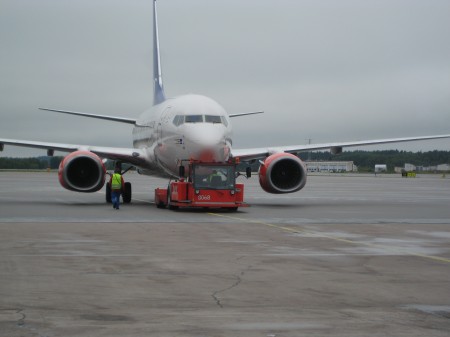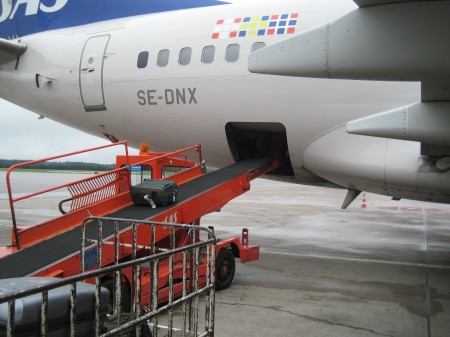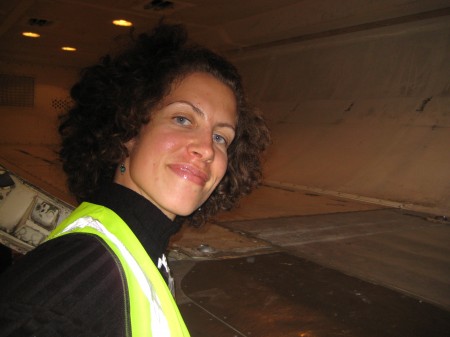
Kay mentioned when I visited Vancouver that I don’t often write about my work. She wondered if that meant it was bad! Quite the contrary… my job and colleagues here are great, and that is what made it desirable to stay another year, even though it meant being away from Graham and my family longer. I think because I started the blog with our families in mind, I thought the shop-talk might be too boring. Here comes a research update!
Over the last year I published 3 articles using data from the UBC Back Study, and started another two articles using the Back Study data, but looking at new questions around cost efficiency.

The most exciting development is the design and (almost) launch of a field study that will measure the shoulder and back postures of airline baggage handlers as they conduct their work at the Arlanda (Stockholm) airport. The baggage handlers (or ‘air station ramp attendants’, or ‘flygplanlastare’ in Swedish, which yields the English translation ‘flight loader’) handle each bag several times after you check it in… in a sorting area to make sure it gets on the right plane, then into a cart, then (often) out of the cart and onto a conveyor, then stacking the bags into the cargo hold… after accounting for where the bags should go front to back and right to left so the plane will be balanced. When the plane lands at its destination, this process proceeds in reverse.

When we conduct research at the airport, it is important that we interfere in an absolutely minimal way so that the loading all happens on time (their priority) and also so we see ‘real work’ and not work that has been modified by our presence (our priority). We have special permission to have video cameras at Arlanda, so we will be filming the work for later analysis. This will present some unique challenges: Swedish winter weather, small spaces, highly mobile workers covering a big geographical area over the day, and sub-optimal viewing conditions, lighting, angles, etc.
I will let you know how this goes. I am lucky to be joined in the field by fellow Canadian Jennie and intrepid Swedes Jens and Calle, and I am confident we will find creative ways of getting the job done! 🙂

This is very cool. I like to see your work and learn more about it. It will be challenging to come up with ways to film in a dark, cramped, crowded, round location – I’m interested to hear how you solve that. I also especially like that, even in the cold, even in the utilitarian environment of your work place, even in a yellow safety vest, you have pretty earrings and are rocking a great haircut. Go, style-sistah.
Here is a mini-update: my new short URL for my CBF research website http://www.hig.se/caetrk